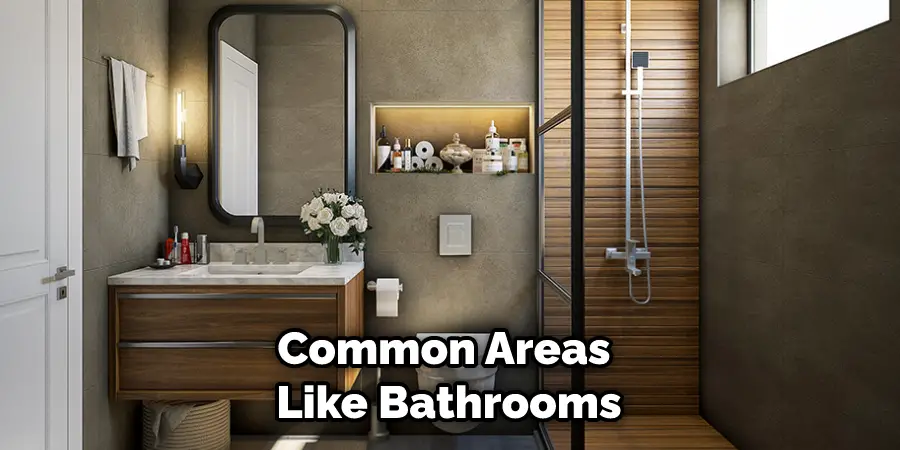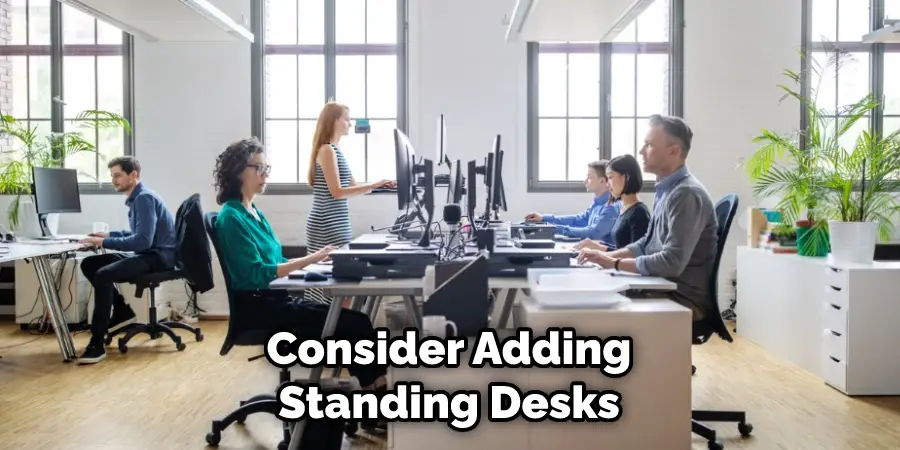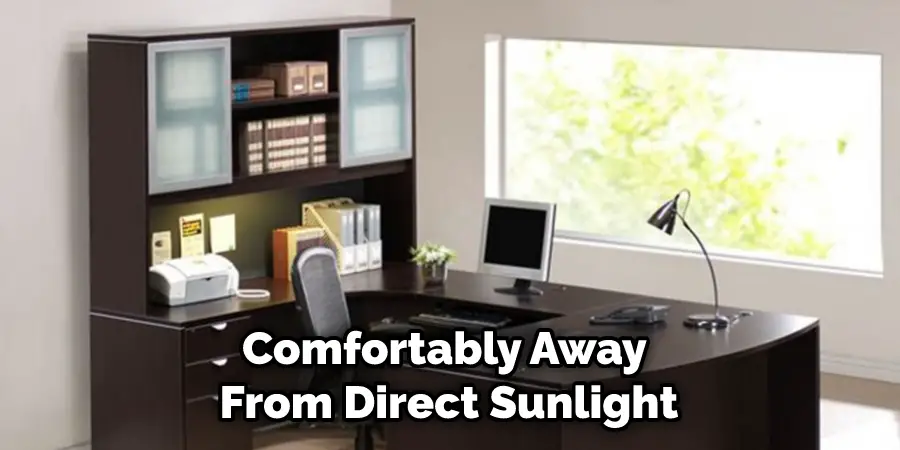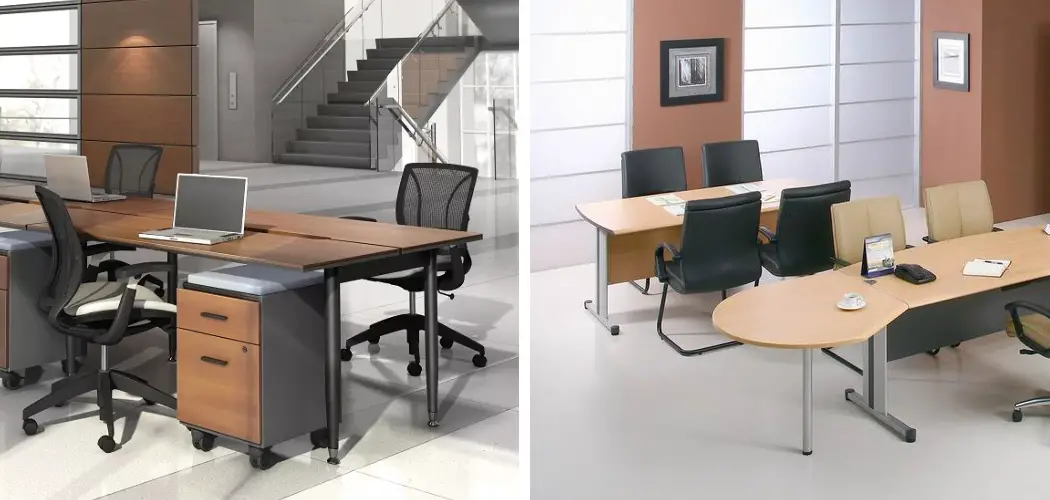Whether you’re designing a new office space or just rearranging existing furniture, how you arrange your office furniture can greatly impact overall productivity.

By considering how employees interact with each other and how they work individually, it’s possible to create an office layout that encourages collaboration and creativity while promoting efficiency and focus. Here are some tips on how to arrange office furniture.
Can You Arrange Office Furniture?
Arranging office furniture is a great way to freshen up any workspace. However, many people don’t realize how much of an impact a furniture rearrangement can have on productivity and comfort. It can also be a fun way to express creativity while still adhering to workplace standards and regulations.
Some key considerations when moving office furniture include safety, symmetry, functionality, and aesthetics. Planning how pieces should be placed in the most effective way will save you headaches in the long run.
A well-thought-out plan of action with specific measurements of space and what type of furniture do best in certain areas is necessary for a successful rearrangement effort. Remember that working with a professional moving or design company can help ensure everything goes off without a hitch!
Why Should You Arrange Office Furniture?
Arranging office furniture is essential for creating a space that is both ergonomic and inviting. In addition, having an organized workspace helps to promote productivity and reduce stress, as you know where everything is and can access it more easily.
A well-arranged room also opens up more possibilities for collaboration with colleagues, as you can easily enter another person’s work area and discuss tasks with them. Furthermore, arranging your office furniture correctly will show potential clients or visitors that your business takes itself seriously and values professionalism.
All in all, given the many importance of arranging office furniture, it should be a priority in any business environment.
7 Tips to Follow on How to Arrange Office Furniture
1. Start With the Basics
Before diving into any details about where individual pieces of furniture should go, start by thinking about the basics. For example, which walls should be left open for windows or doors? Do you need a dedicated entrance or exit?

Where should common areas like bathrooms or break rooms be located? Once you’ve determined these larger details, you can arrange smaller pieces of furniture accordingly.
2. Create Separate Spaces for Different Needs
When planning an office space, it’s important to think about how people will use it differently throughout their working day. For example, if you have conference rooms or meeting spaces, make sure they are located away from individual workstations so that there won’t be any distractions during meetings.
If possible, try to keep separate spaces designated for individual work and group work so that employees can find the right environment depending on their needs.
3. Choose Ergonomic Furniture
Ergonomic furniture is designed with comfort in mind; it helps reduce stress on the body while allowing someone to remain productive over long periods of time without interruption.
When selecting furniture for your office space, look for items like ergonomic chairs and adjustable desks that provide support and flexibility to maximize efficiency and prevent fatigue from setting in too quickly.

You may also want to consider adding standing desks if they fit within your budget—these can be great alternatives to traditional seated desks since they promote better posture and help alleviate muscle strain caused by sitting all day long.
4. Make Sure Everyone Has Enough Room to Move Around
Ensuring everyone has enough room to move around is important when arranging office furniture. This means leaving plenty of space between desks and making sure any pathways remain clear so that individuals can easily navigate the office without feeling cramped or overwhelmed by their surroundings.
Additionally, if you’re dealing with smaller office space, try to opt for furniture pieces that can double as storage solutions—this will help reduce clutter and give everyone more room to work in.
5. Don’t Forget About Lighting
Lighting is an often overlooked aspect of arranging office furniture, but it can greatly impact how comfortable people feel in the workspace. Natural light is ideal since it helps keep everyone alert and energized throughout the day, so make sure windows are accessible and desks are arranged close enough that they get their share of sunlight.
If the natural lighting isn’t available or insufficient, then consider adding artificial lighting accordingly—desks should be illuminated with task lights, and overhead lights should be used strategically to reduce glare and provide general illumination.
6. Personalize Your Workspace
When it comes to arranging office furniture, don’t forget that personalization can go a long way toward creating an individualized workspace. Whether you’re adding plants, artwork, or other decorative items, allowing employees to express themselves in their workspace can help them feel more comfortable while they work.

Plus, adding personalized touches can also help employees stay focused and motivated throughout the day—it can make their workspace look less like an office and more like a home away from home.
7. Create Zones for Different Activities
It’s important to consider how different people will use the office space and how their activities might overlap. If, for instance, you have a large team of employees all working on various projects at once, then you may want to designate separate areas for each team to work in or create “work zones” that can be used as needed.
This way, everyone has a designated spot, and they don’t have to worry about getting in each other’s way while they work.
That’s it! You’ve now learned how to arrange office furniture to create a comfortable, efficient, and inviting workspace. However, don’t forget that how you arrange your furniture can hugely impact how productive and motivated your employees are, so make sure you take the time to get it right!
Things You Need to Know Before Arrange Office Furniture
When arranging office furniture, a few things must be considered to ensure the best environment for productivity. First, the space should be sufficient for movement and to accommodate people.
You will also need to consider the amount of natural light available and the ideal positioning of desks so employees can work comfortably away from direct sunlight.

If possible, ensure that chairs are ergonomically designed and provide ample lumbar support, as sitting down all day can cause considerable strain on the back.
Finally, consider adding plants or art pieces to give the office aesthetics and reduce worker stress levels. With careful planning, you can find a layout that works perfectly in your office.
Benefits of Arrange Office Furniture
Arranging office furniture to suit the workplace’s specific needs can provide several benefits. When furniture is strategically placed, it can create an environment that encourages productive working and collaboration.
Properly arranged chairs and desks can help boost energy levels by allowing workers to get up and move around and providing comfortable seating and partitions for more privacy when needed.
Additionally, when furniture is neatly organized, it creates an inviting, aesthetically pleasing space which boosts morale. Therefore, organizations should strive to create a workplace that maximizes productivity through efficient furnishing arrangements.
5 Common Mistakes People Make When Trying to Arrange Office Furniture
1. Not Considering the Layout of The Room
One of the most common mistakes people make when trying to arrange office furniture is not considering the room’s layout. It is important to consider the room’s size and shape when choosing furniture, as well as the placement of doors and windows.
Additionally, it is important to consider how much natural light the room gets, as this can impact the furniture placement and the type of lighting needed.
2. Not Measuring Furniture Before Buying
Another common mistake people make is not measuring furniture before buying it. This can lead to problems such as furniture not fitting through doorways or being too big for the space. Measuring the furniture and the room before making any purchases is important.
3. Choosing the Wrong Type of Furniture
Another mistake people often make when arranging office furniture is choosing the wrong type of furniture. For example, choosing a desk that is too small for the space or selecting chairs that are uncomfortable to sit in. It is important to carefully consider what type of furniture is needed and what will be used most often before making any decisions.
4. Not Considering Ergonomics
Ergonomics is the study of how people interact with their environment. When arranging office furniture, it is important to consider ergonomics to create a space that is comfortable and efficient to work in. For example, placing a computer monitor at eye level or selecting a chair with good back support.
5. Not Considering Aesthetics
While function should be the main concern when arranging office furniture, aesthetics should also be considered. This includes things like choosing colors and materials that complement each other and creating a pleasing overall appearance.
Conclusion
Arranging office furniture properly is key to creating an efficient workspace that encourages collaboration and productivity without sacrificing comfort or well-being.
Start by considering basic layout elements such as entrances and exits before moving on to details like selecting ergonomic chairs and adjustable desks that make working more comfortable over long periods of time.
By taking into account both individual needs and collaborative spaces, it’s possible to create an office setup that promotes focus while still allowing employees plenty of opportunities for creativity and connection with colleagues! Thanks for reading our post about how to arrange office furniture.

